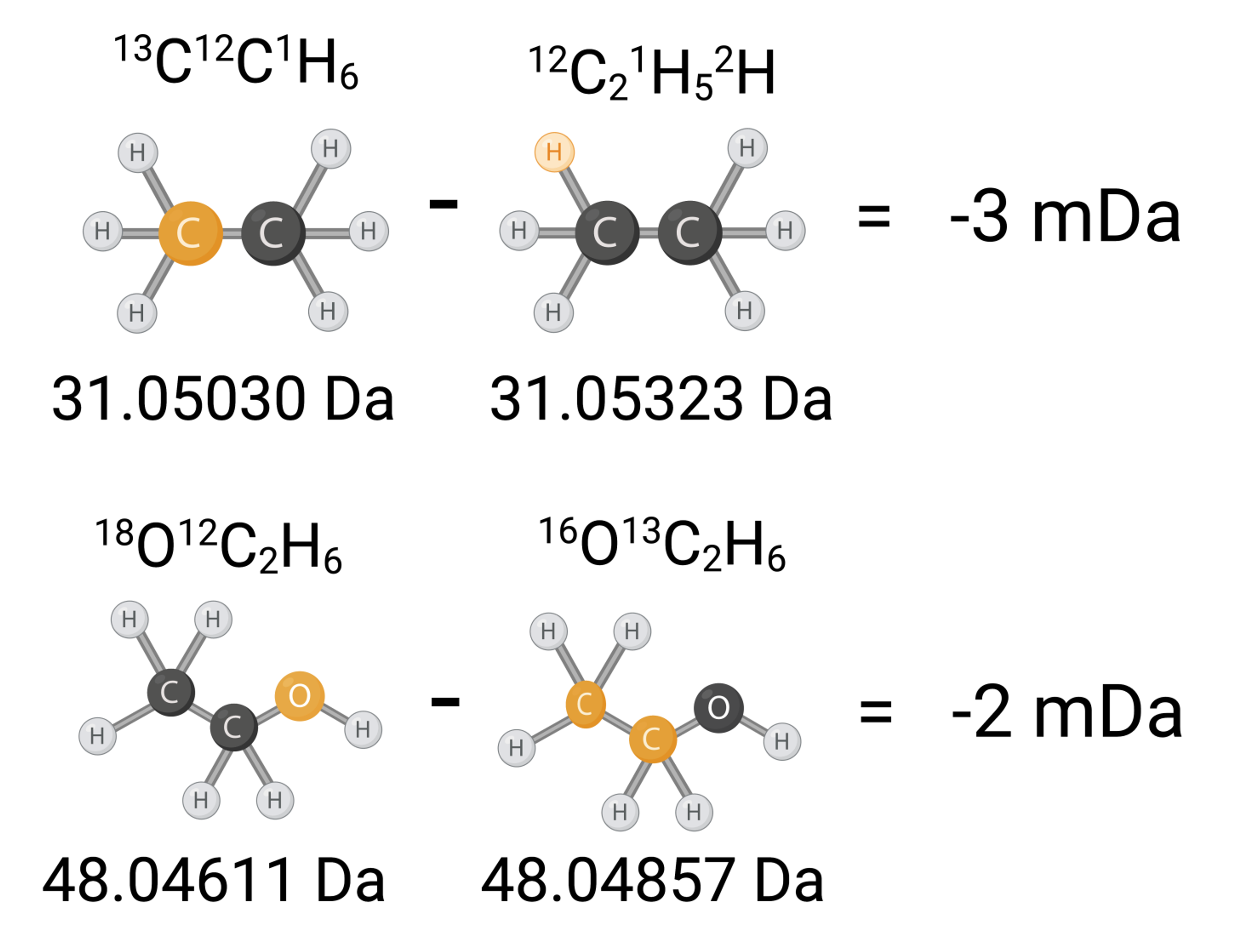Tag Design
Leveraging differential mass defect to create tens to over a thousand isotopologues of small molecules to achieve high-plex proteomics.
Two examples of differential mass defect.
The focus of this exposition is to characterize the potential of the differential mass defect to create tens to over a thousand isotopologues of small molecules and how careful combinations of these small molecules can combinatorially scale the plex size to minimize synthetic steps. Importantly, we show that plex sizes in the hundreds, an order of magnitude greater than state-of-the-art, are achievable using molecules comparable in size to existing commercial tags, and that going beyond hundreds may require larger molecules. Approaches to achieve high-plex proteomics will almost certainly require using the differential mass defect, so we hope this exposition serves to accelerate progress in reagent development to achieve high-plex proteomics.
Publications
How to design 1000-plex mass tags using the differential mass defect
